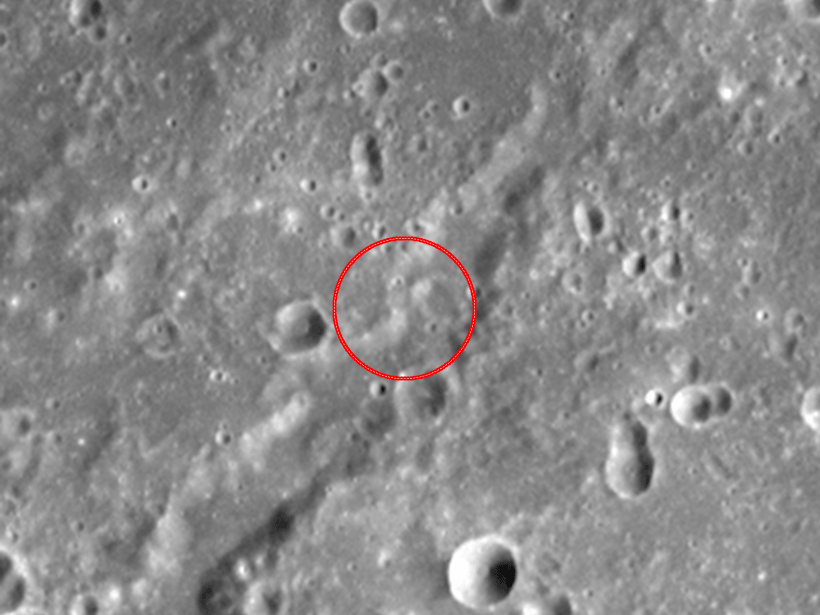This before-and-after animation of two images taken by the MESSENGER spacecraft shows the result (inside the red circle) of an impact event on Mercury that occurred sometime between 25 June 2012 and 11 June 2013. Credit: NASA
Compared with Earth, the surfaces of most other objects in the solar system appear largely static. Planetary scientists have long believed that impacts from space debris are the principal source of change on these surfaces and that the rate of such impacts has been decreasing with time. Age estimates for virtually every surface beyond Earth and the moon rely on this "cratering rate."
The cratering rate varies with distance from the sun. It is most poorly constrained for Mercury, whose position near the sun has made the acquisition of high-resolution imagery challenging. NASA's MESSENGER (Mercury Surface, Space Environment, Geochemistry, and Ranging) spacecraft, which orbited Mercury from 2011 to 2015, provided the best images to date, with spatial resolutions as low as 5 meters per pixel in some regions.
To improve the cratering rate estimate for Mercury, Speyerer et al. examined 58,552 pairs of MESSENGER images with overlapping surface coverage in search of newly emplaced surface features. By comparing "before" and "after" images, they identified surface changes and computed the implied yearly rate of change per square kilometer. The research was published in Geophysical Research Letters.
The authors identified 20 new features in their data set. Of those, 19 are quasi-circular structures with diameters between 400 meters and 1.9 kilometers, one of which is surrounded by the radial rays typical of impact craters on Mercury.
Nineteen new impact craters during the 4 years of MESSENGER's mission implies a cratering rate for small impactors that is 1,000 times greater than the current accepted value. The researchers reject such an extreme revision to the cratering rate and instead advance an alternative hypothesis that many of these features represent endogenic geologic changes.
A characteristic small-scale Mercury surface formation is the hollow, a rounded depression without a sharp, craterlike rim. Hollows have previously been observed to occur mainly on the least reflective portions of the planet's surface, as well as in regions modified by large impact craters. Comparing their 19 features with previously mapped geologic units, the authors found that 12 are in or very near low-reflectance surface regions. Six are in the vicinity of craters with other known hollows.
Regardless of the features' origin, these observations show that Mercury's surface is undergoing significant evolution. If the alteration rate implied by these 20 features is consistent with the long-term average, 99% of the planet's surface could change in the next 25 million years. That rate of change far exceeds what has been imagined previously for Mercury, suggesting that the newly observed features will likely be a focus of the European Space Agency's BepiColombo mission, which is currently on its way to the planet.
More information: E. J. Speyerer et al, Present Day Endogenic and Exogenic Activity on Mercury, Geophysical Research Letters (2022). DOI: 10.1029/2022GL100783
Journal information: Geophysical Research Letters
Provided by American Geophysical Union
This story is republished courtesy of Eos, hosted by the American Geophysical Union. Read the original story here.
























